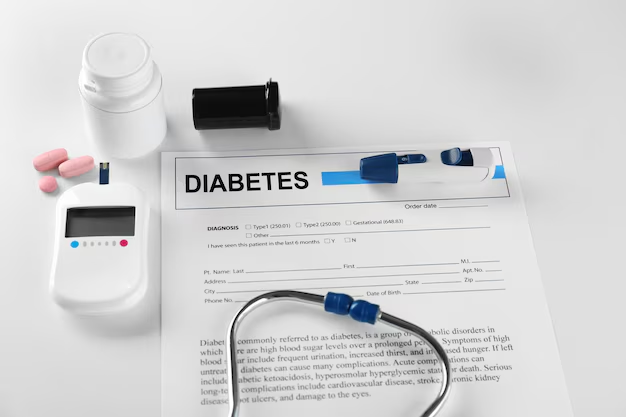Recognizing Diabetes: What to Watch Out For
Diabetes is a chronic health condition that can go unnoticed for years, silently wreaking havoc on your body. Early detection is crucial for effective management and preventing complications. But how do you know if you might have diabetes? Here’s a comprehensive guide to understanding and recognizing the symptoms and what steps you should take next.
Common Symptoms to Identify
One of the tricky aspects of diabetes is that its initial symptoms may seem harmless or are easily overlooked. Here are some signs to be on the lookout for:
- Frequent urination: If you're finding your trips to the bathroom are more frequent than usual, this could be a sign. Your kidneys are working overtime to filter excess sugar from your blood.
- Excessive thirst: Along with excessive urination comes increased thirst as your body tries to make up for lost fluids.
- Unexplained weight loss: Sudden, unintentional weight loss may herald diabetes because the body can’t use glucose properly, turning to fat and muscle for energy.
- Extreme hunger: Even after eating, you might feel an intense hunger due to energy-starved cells.
- Fatigue: High blood sugar levels can significantly impact your energy levels, leaving you feeling tired more often.
- Blurred vision: Excess sugar in the blood can damage blood vessels in the eyes, leading to vision changes.
- Slow-healing sores or frequent infections: High glucose levels can impair mind healing and predispose you to infections.
When to Seek Medical Advice
It’s easy to dismiss these symptoms as minor or unrelated, but if they persist, it’s important to consult a healthcare professional promptly. A simple blood test can confirm whether you have diabetes or prediabetes. The tests typically used include:
- Fasting blood sugar test
- Glycated hemoglobin (A1C) test
- Oral glucose tolerance test
Managing Diabetes if Diagnosed
If you receive a diabetes diagnosis, it's not uncommon to feel overwhelmed. However, many resources can support you through the journey, from lifestyle changes to financial assistance and educational initiatives.
Key Management Tips:
- Healthy eating and exercise: Adopting a balanced diet and regular physical activity can greatly help in managing your blood sugar levels.
- Regular monitoring: Keeping track of your blood sugar regularly can provide valuable insights into how your body responds to different foods and activities.
- Medical treatment adherence: In some cases, medication or insulin therapy is necessary, and adhering to prescribed treatments can help maintain your health.
Financial and Educational Resources
Understanding the costs and necessary lifestyle shifts diabetes can bring might become daunting. Thankfully, various financial assistance programs and educational resources are available.
- Government Aid Programs: Many governments offer subsidized healthcare plans and assistance for medications and supplies needed to manage diabetes.
- Financial Assistance: Numerous organizations provide aid or programs to help cover prescription costs and healthcare expenses.
- Debt Relief Options: If medical expenses have contributed to debt, consider exploring relief services that specialize in managing medical debts.
- Credit Card Solutions: Investigate credit cards offering benefits for medical expenses, or those tailored to assist people managing long-term health conditions.
- Educational Grants: Some foundations and organizations offer educational grants for those pursuing studies affected by or related to diabetes.
Resources to Consider:
- 🏥 Medicare & Medicaid: Federal health insurance options covering diabetes care.
- 💊 Pharmaceutical Assistance: Programs from drug companies offering discounted or free medications.
- 📚 Diabetes Education Programs: Classes and support groups to better understand how to manage diabetes.
- 🏦 Nonprofit Organizations: Groups like the American Diabetes Association offer financial help and advocacy.
Early action is key. If you suspect you have diabetes, reach out to a healthcare provider for testing. Armed with the right information and resources, navigating a diabetes diagnosis can become a manageable part of everyday life.
